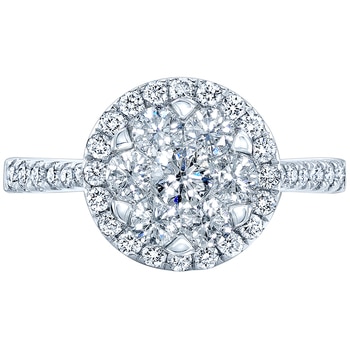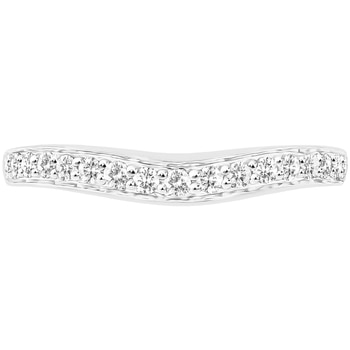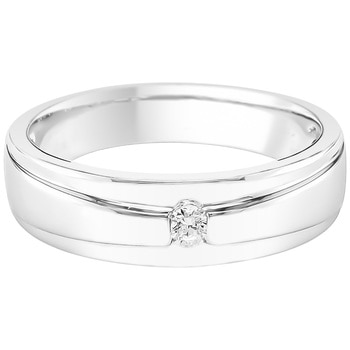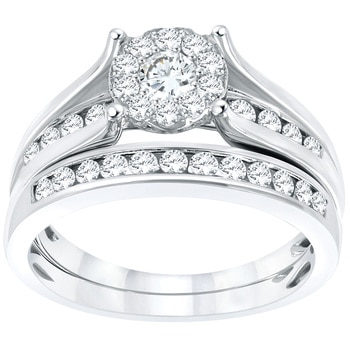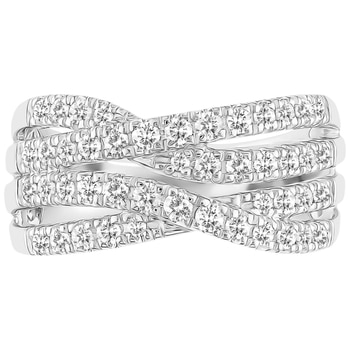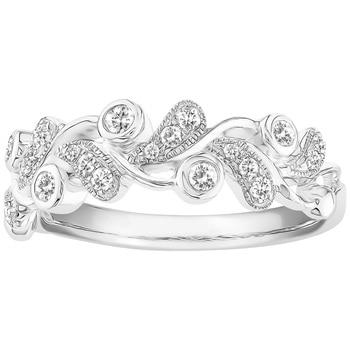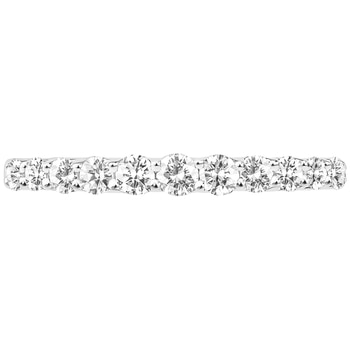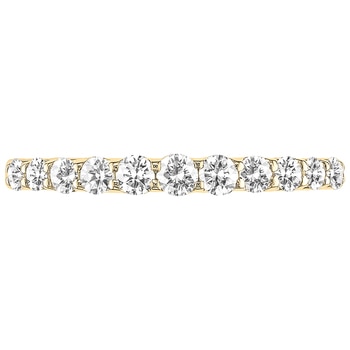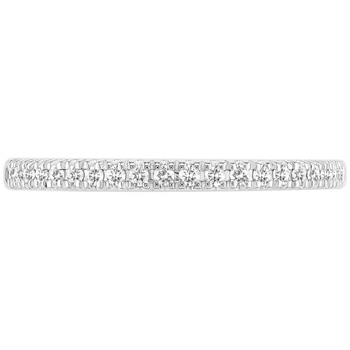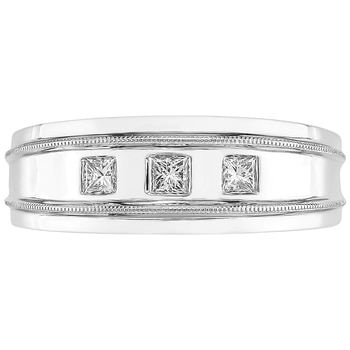You’ll have a twinkle in your eye and she’ll have a sparkle on her finger once you’ve nailed the rock. Here’s what to look for when buying an engagement ring.
Valentine’s Day is around the corner: is it time for that question to be popped? According to a 2016 US survey, 41 per cent of married millennials (aged 25-34) would have liked to have been proposed to on this ‘day of love’. However, it doesn’t matter if it’s February 14, it’s about how the proposal happens and with what. If you’re bedazzled by all the engagement ring information out there, here’s your crash-course on rock shopping.
Where should I shop?
Like any important purchase, it pays to shop around, comparing prices and styles, and there are options beyond high-end designer jewellers. “Our members are surprised we sell fine jewellery, but I think they’re more surprised at our quality and price,” says Costco Jewellery Buyer, Jennifer Cataldo. “Our team of gemologists stringently inspect every piece we order,” she adds. When it comes to cost, members can be assured that the jewellery follows the same principle as all other products sold at Costco. “We’re about offering great value all-year round,” says Jennifer.
What do I need to know?
You don’t need a gemology degree to know the basics of what to look for in an engagement ring. All you need to remember are the four ‘C’ words: cut, colour, clarity and carat.
Cut
The cut of a diamond refers to the way the gem has been sliced to increase its sparkle, or brilliance, when transforming it from a rough to polished stone. The way a diamond is cut will reflect light differently: a well-cut diamond will shine more brightly.
Colour
White diamonds are graded on a colour scale, from pure white to yellow. D is colourless and Z is light yellow. The closer to D, the more valuable the diamond.
Clarity
This describes the scale of imperfections – also known as inclusions or blemishes – in the diamond. Don’t be too concerned: these are naturally occurring and mostly only visible under a microscope. They’re rated from FL, meaning flawless to I3, which stands for obvious inclusions. Other codes on the scale include SI (slightly included) and VVS (very, very slightly included).
Carat
This unit of measurement describes the weight of the stone, not the size, with the heavier ones often sporting weightier price tags. Having said that, overall quality and price will depend on the other Cs as well.
Where should I scrimp and where should I splurge?
Thankfully there are a few tricks to keeping your hip-pocket happy when buying an engagement ring. Since imperfections are mostly invisible to the naked eye, you can save cash on clarity.
There are also savings when it comes to the ring’s shape. “We sell the ever popular halo style, which has a circle of diamonds around the centre diamond to add sparkle and make the centre stone appear larger,” says Jennifer. “It’s great for those on a budget who are after a bigger look.”
You can pay less for a coloured gemstone, too. Diamonds aren’t your only option and, contrary to the popular saying ‘Diamonds are a girl’s best friend’, they’re not to everyone’s taste.
Where it’s best to spend, though, is on cut: a well-cut gemstone can look larger and will be shinier than an inferior-cut diamond.
9 popular gem shapes
Engagement rings come in all shapes, too. Here’s what you need to know about nine of the most popular cuts.
Round or brilliant
Since a round diamond is one of the most popular, you’ll have loads of choice for your budget with this style. The way this diamond is cut also makes it one of the most sparkly.
Cushion
A fusion of square, rectangular and oval, this looks like a pillow with rounded edges, which make the stone less prone to chipping as some other cuts. It’s usually appealing to vintage jewellery lovers.
Asscher
The square version of the emerald is step-cut to draw attention to the very centre of the diamond. For this reason, if you’re going with this cut, it’s important to buy the best-quality diamond for your budget.
Marquise
This oval diamond design with pointed ends can appear larger because of its elongated shape. For this reason, marquise diamond engagement rings look flattering on many different hands of all shapes and sizes. For the best look, make sure your stone is perfectly symmetrical.
Baguette
Yes, named after the French bread stick! This long, slender diamond tends to be less brilliant than round cuts, making the colour more noticeable, so go for a higher colour grading. On the upside, they’re often a bit less expensive than other styles.
Emerald
Rectangular with step-style facets, this isn’t as shiny as round cuts, but it’s generally less expensive because a one-carat emerald diamond looks larger than a one carat round stone. If the carat is important to you, this could be a great choice.
Oval
With many of the same attributes as round gems – durability being one of them – an oval diamond will sparkle and shine brightly. The oval cut is also less popular than round diamonds, making it more affordable. Its longer surface area means the diamond may seem larger but can make it easier to see inclusions, so colour and clarity are paramount.
Pear
Also called a ‘teardrop’, the pear is high on sparkle as it’s essentially a round cut, just with a point. Beware of styles that look more rounded triangle than pear-shaped, sometimes done by jewellers to increase the carat weight, but this can decrease its value. Six prongs are advised for this shape, especially at the fragile tip of the diamond, for protection.
Princess
A straight square or rectangular stone with multiple facets for maximum shine, gems of this shape can be more affordable than round cuts of the same carat because they retain 80 per cent of the rough gem. Looking good large or small, it suits a range of budgets. Sharp corners can chip and snag, but this can be combatted with a protective setting.

